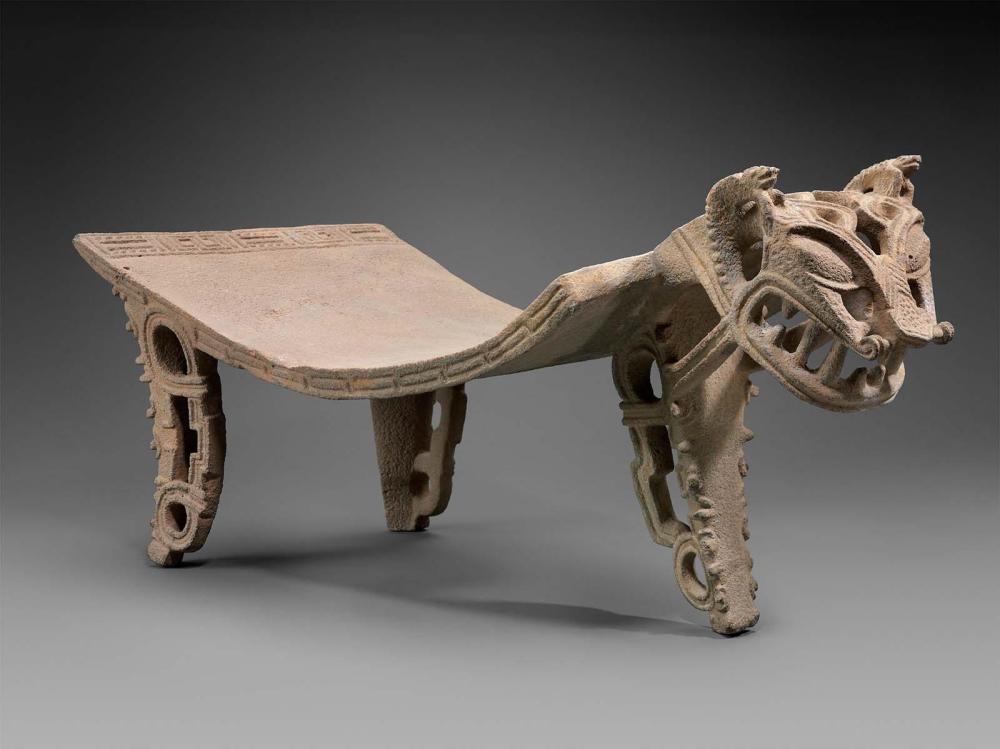Advanced Search 

Jaguar effigy metate
Greater Nicoya
Late Period IV
A.D. 300–700
Object Place: Costa Rica or Nicaragua, Greater Nicoya region
Medium/Technique
Basalt
Dimensions
Overall: 36.8 x 86.4 x 35.6 cm (14 1/2 x 34 x 14 in.)
Credit Line
Museum purchase with funds donated by Jeremy and Hanne Grantham and Timothy Phillips
Accession Number2008.169
CollectionsAmericas
ClassificationsTools and equipment – Household
This "metate," or ceremonial seat, is an excellent example of a rare sculptural style characterized by delicate, openwork carving and finely incised details. The sixteenth-century Spanish observed similar objects used as biers for the embalmed bodies of important individuals and as grinding stones for tobacco and other hallucinogenic plants. They described the jaguar or puma image as a lineage or clan symbol.
DescriptionMetate (grinding stone) with three open-work supports and an open-work jaguar head whose ears are carved in the form of crocodiles. The sculptural style is associated with the Greater Nicoya region of northwestern Costa Rica and sourthern Nicaragua, characterized by delicate, open-work carving and finely incised details. These distinctive metates were used as ceremonial seats, funerary biers, and as grinding surfaces for tobacco and other hallucinogenic plants used during religious rites. The jaguar (or puma) may have been a lineage or clan symbol as also was the crocodile according to .16th-century Spanish sources.
Provenance1960s, acquired in Costa Rica by private American collectors [see note]; May 16, 2008, anonymous (American private collection) sale, Sotheby's, New York, lot 3, to the MFA. (Accession Date: June 25, 2008)
NOTE: According to the Sotheby's auction catalogue, this had been "acquired over 40 years ago." Additional information provided by the auction house indicated that the consignor and her husband had acquired this object in Costa Rica in the 1960s.
NOTE: According to the Sotheby's auction catalogue, this had been "acquired over 40 years ago." Additional information provided by the auction house indicated that the consignor and her husband had acquired this object in Costa Rica in the 1960s.
